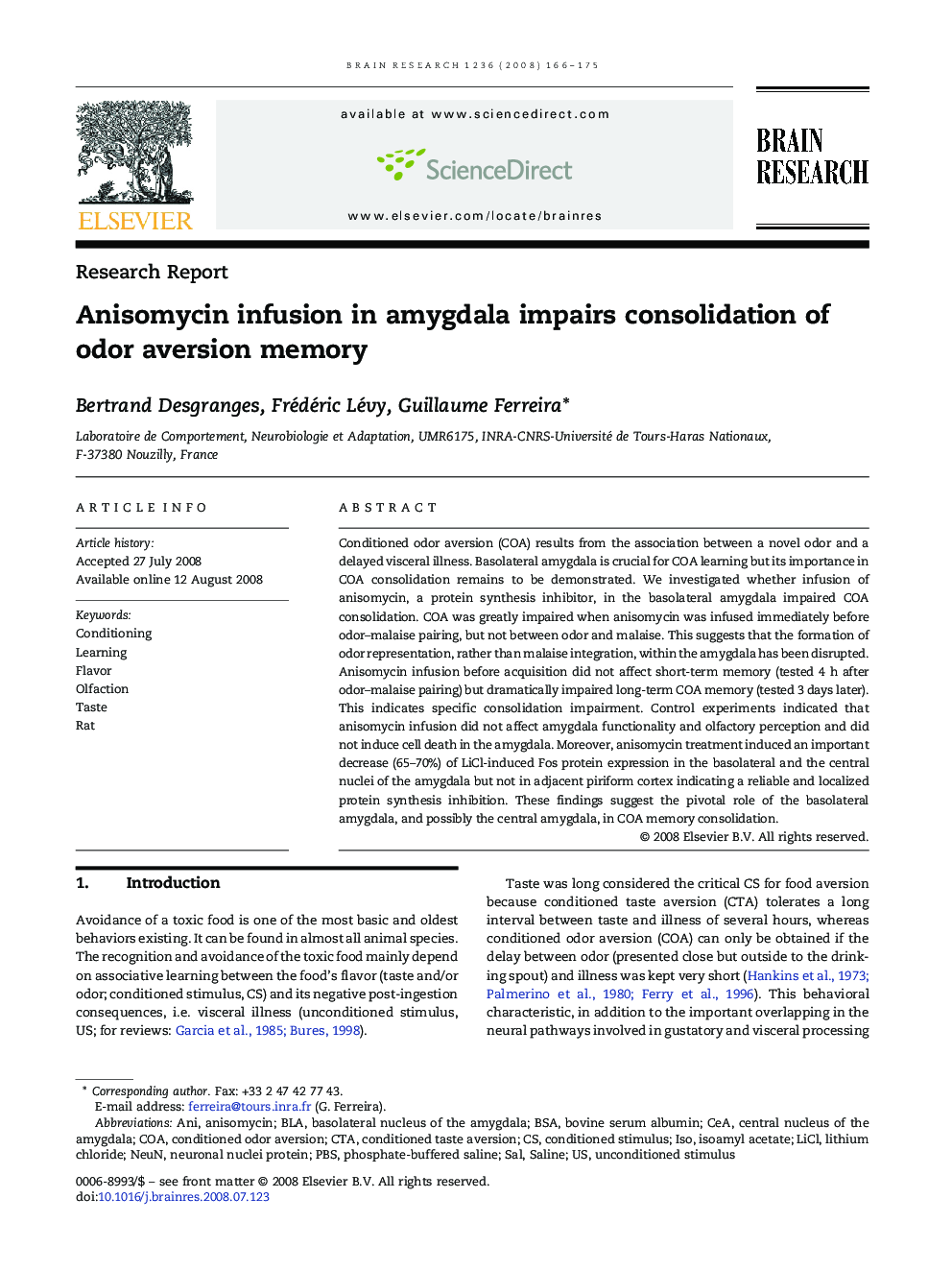| Article ID | Journal | Published Year | Pages | File Type |
|---|---|---|---|---|
| 4329068 | Brain Research | 2008 | 10 Pages |
Conditioned odor aversion (COA) results from the association between a novel odor and a delayed visceral illness. Basolateral amygdala is crucial for COA learning but its importance in COA consolidation remains to be demonstrated. We investigated whether infusion of anisomycin, a protein synthesis inhibitor, in the basolateral amygdala impaired COA consolidation. COA was greatly impaired when anisomycin was infused immediately before odor–malaise pairing, but not between odor and malaise. This suggests that the formation of odor representation, rather than malaise integration, within the amygdala has been disrupted. Anisomycin infusion before acquisition did not affect short-term memory (tested 4 h after odor–malaise pairing) but dramatically impaired long-term COA memory (tested 3 days later). This indicates specific consolidation impairment. Control experiments indicated that anisomycin infusion did not affect amygdala functionality and olfactory perception and did not induce cell death in the amygdala. Moreover, anisomycin treatment induced an important decrease (65–70%) of LiCl-induced Fos protein expression in the basolateral and the central nuclei of the amygdala but not in adjacent piriform cortex indicating a reliable and localized protein synthesis inhibition. These findings suggest the pivotal role of the basolateral amygdala, and possibly the central amygdala, in COA memory consolidation.
